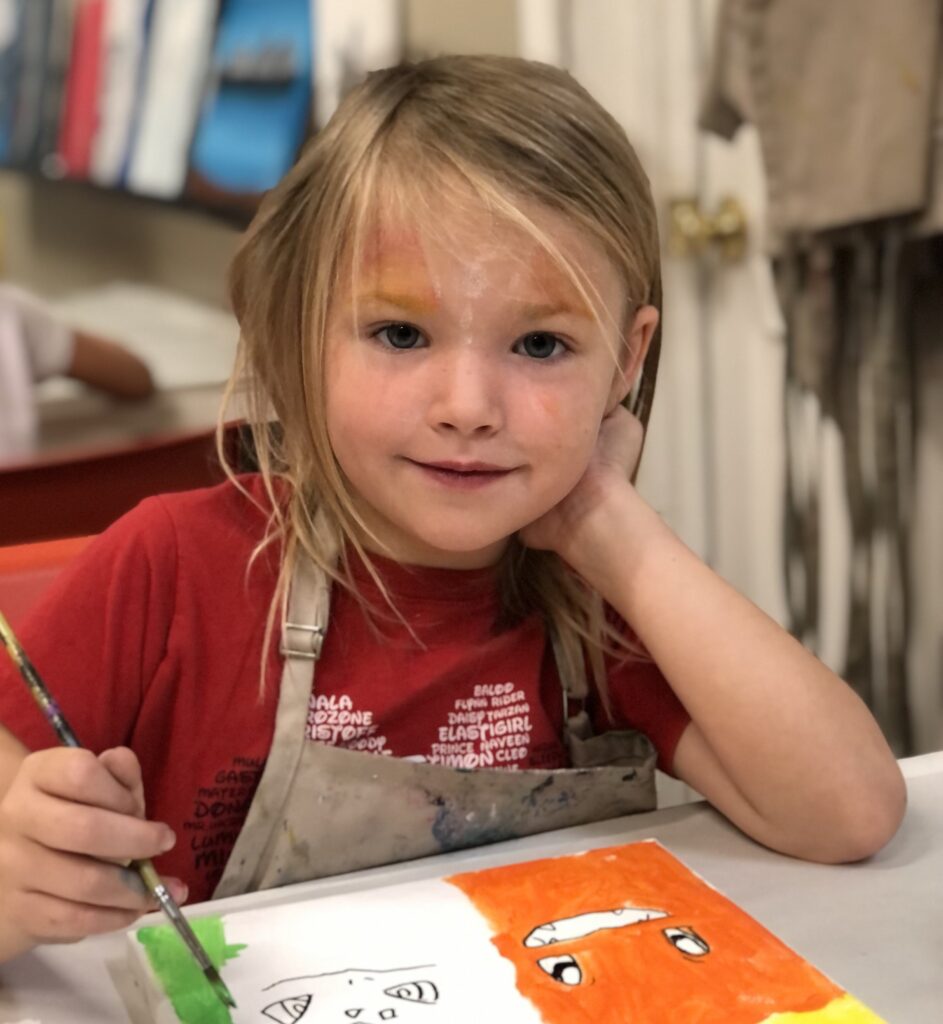Art: It uniquely, and incredibly transcends age boundaries and stages of human development. Art provides a unique and enriching experience benefitting individuals from infancy to senior years. Furthermore, this is also true across emotional and developmental stages of life. This article will outline how participation in the arts can transform and enhance life at any age or stage of life. We will also explore ways to add art experiences at the specified ages and stages.
Art for Infants and Children under 3
The early years of a child’s life are a canvas waiting to be filled with vibrant strokes of creativity and wonder. Exposing infants to visual arts such as colorful shapes, patterns, and age-appropriate art activities plays a pivotal role in their cognitive development. Visual stimulation enhances their ability to recognize and interpret visual information, laying the groundwork for future learning. Sensory exploration contributes to fine motor skills and sensory awareness. Additionally, these activities nurture curiosity and creativity. Art can provide a creative outlet for emotional expression in toddlers, promoting a sense of emotional well-being. Looking at books with patterns and color would be stimulating for infants. Experimenting with finger paints and color using fine motor shills would be great activities for toddlers. Use your creativity to spark creativity in those little brains!
Art for Children Ages 3-12

Art Classes and art experiences for children nurtures their innate creativity. As they experiment with colors, shapes, and different art materials, kids learn to express themselves freely. This free expression fosters creativity and imagination in all aspects of their lives. Drawing, painting, and crafting enhances fine motor skills and hand-eye coordination. Children often use art as a means to convey their emotions, thoughts, and experiences in a safe place for them to practice self-expression. Participating in creative art projects often involves making decisions and solving problems. Artistic expression gives children an opportunity to think critically and make choices, fostering cognitive development.
Art for Adolescents Ages 13-18
As adolescents undergo a period of self-discovery, art classes can serve as a powerful outlet for self-expression. In light of the current social issues faced by teens, helping them explore their own identity and emotions is important.Teens are facing an increasing variety of pressures resulting in high stress levels. Art offers a stress-relief outlet, helping them to manage their anxieties and mental health. As adolescents participate in art classes or artistic free expression, they begin to develop artistic skills. Additionaly, they grow in self-esteem and confidence. These experiences provide a positive impact on their overall development during these critical years. As adolescents look for self-awareness in the arts, they are also exposed to the various cultures and different perspectives of those around them. These interactions may broaden their horizons and promote social and cultural development which may last a lifetime.
Art for Adults
Art is skill that offers adults the opportunity to continue skill development throughout their lives. This lifelong intellectual engagement is crucial for continued cognitive development and personal growth as adults age. Just as with teens, adults benefit from the stress-reducing qualities of engagement in the arts. Observing art in a museum or participating in art espression can serve as a meditative, relaxing activity for adults. Art classes can provide a way for adults to socialize and connect with others who share their interests. Such opportunities may foster a sense of belonging and emotional well-being during the various transitions of adulthood.
Art for Seniors
Engaging in art can help seniors maintain cognitive health. Art expression and even art observatiot stimulates memory, problem solving skills and overall brain function. Art classes provide seniors with a creative outlet for their emotions, reducing feelings of isolation and depression. Art classes may help them feel connected with nature, various art mediums, and people who share their interests. Practicing art helps senior maintain dexterity and fine motor skills, improving their quality of life. Seniors often use art to share life experiences, stories and culture with others and with their posterity, providing a sense of legacy and connection. Being exposed to art at museums or in books ro art galleries can provide a wonderful, meaningful opportunity for all of the benefits of involvement of the arts for seniors.
In summary, art classes and art experiences are beneficial for individuals of all ages. Experiencing the arts caters to diverse backgrounds and developmental needs. As outlined in this article, the arts can offer a wide range of physical, emotional, cognitive, and social benefits. Regardless of age, embracing the world of art can be a transformative journey that enhances personal growth and overall well-being. Whether a child, adolescent, adult or senior, its never too early or to late to pick up a paintbrush and engage in creative expression. Cordovan Art School has a class for you! Check out the options at www.cordovanartschool.com For other art activities, check out this article: https://www.today.com/parents/family/art-activities-for-kids-rcna52593